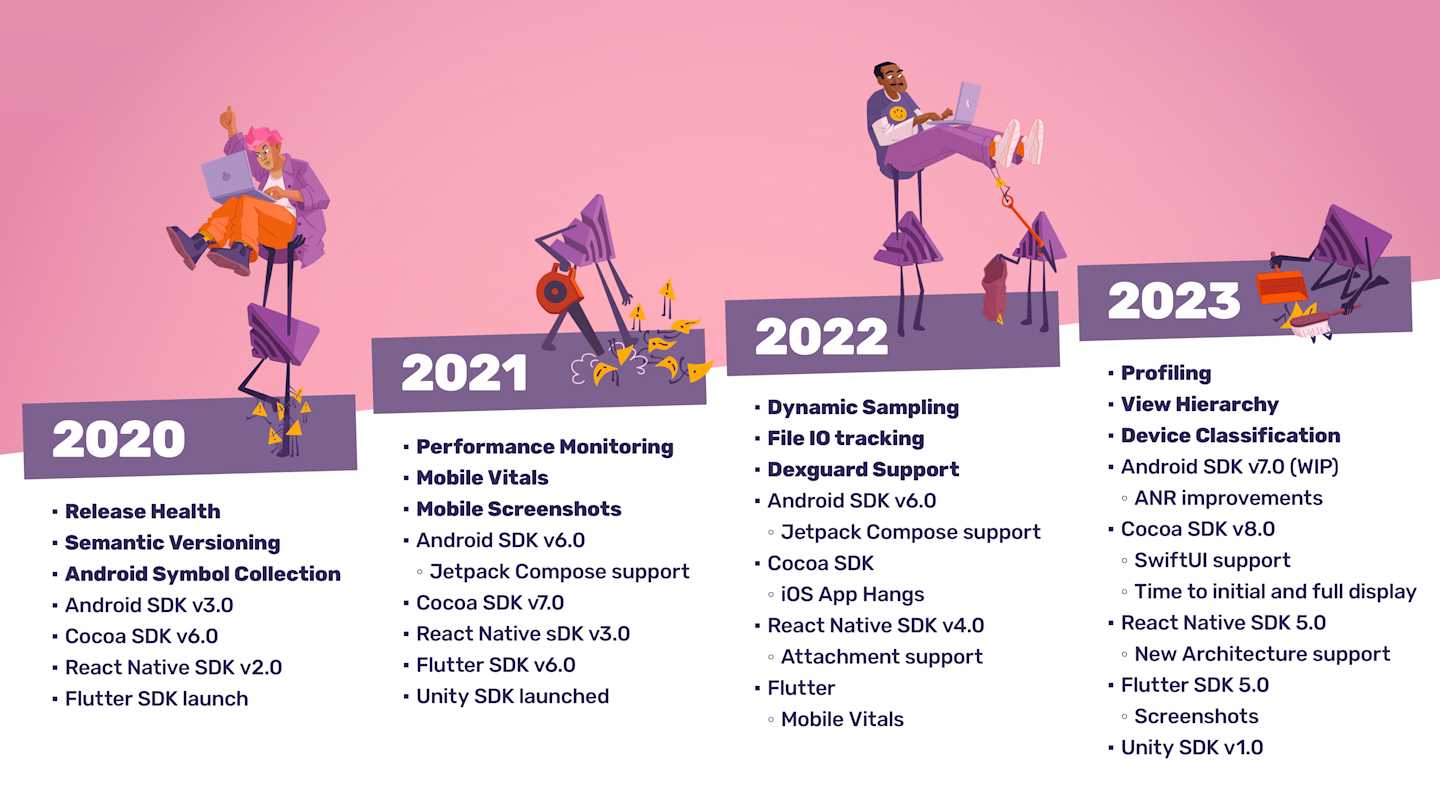Mastering mobile: Reflecting on three years of mobile growth
Mastering mobile: Reflecting on three years of mobile growth
Few areas of development have seen as much recent change as mobile. Mobile phone and app usage spiked during the pandemic as we adapted to life with social distancing procedures. And even post-Covid, many mobile habits have stuck, whether it’s using apps for connecting with friends, shopping, getting healthcare, or staying fit. In the first half of 2022, daily time spent on mobile devices in the US was up 39% from three years ago and up 9% from late 2021.
The unanticipated surge of mobile users forced developers to re-evaluate their tooling. With exponentially more downloads and traffic, they needed to find and fix bugs, crashes, and performance issues faster — before they impacted large swaths of customers.
Delivery Hero, the world’s leading local delivery platform, saw a major pandemic-driven boost to growth. In Q1 2020, the platform’s orders almost doubled (+92%) to 239 million. As those levels of growth continued (they now process over eight million daily orders for over 2.2 billion people), their engineering and product teams grew 6x over the past four years, with the mobile team going from 40 to 90 engineers per platform. As the engineering department scaled, leaders realized that their existing mobile monitoring tools lacked the advanced features their developers needed to maintain the fast, responsive, and reliable app experience Delivery Hero’s users expect.
Relive provides a platform for cyclists, runners, hikers, and skiers to share their outdoor activities. With gyms closed during the pandemic, demand for outdoor activities skyrocketed. Relive allows users to combine their outdoor passions with virtual connection. Their users grew from 3 million users in March 2019 to 9 million users in November 2020. They now have over 15 million users. As their user base rapidly grew, they needed a new crash reporting solution. As Frikkie Snyman, Mobile Platform Engineer explains, “We had been using Firebase's Crashlytics, which does not support source maps from React Native, so it was always difficult trying to understand exactly where a crash originated from and what change might've introduced it.”
At Sentry, our mission is to help developers create and maintain the best software experiences for their users. As developers started investing more in their mobile experiences, we, in turn, doubled down on our mobile monitoring products. We launched Semantic Versioning in January 2020, Release Health in May 2020, Mobile Performance Monitoring in March 2021, and Mobile Vitals and Mobile Screenshots in August 2021. We launched support for Flutter and Unity in 2021. As we come out of the pandemic, we’ve continued that momentum. In just the past six months, we’ve launched support for Jetpack Compose, File I/O in the Main Thread, and, most recently, we became the first and only solution to offer production profiling.
Admittedly, our founding strengths were in frontend and backend monitoring. Since launching our first mobile SDKs for Android and iOS in 2016, however, we’ve gradually – then suddenly – become the most complete mobile crash reporting and error and performance monitoring solution on the market.
As of June 2023, the number of mobile teams using Sentry has increased 240%, and the amount of daily errors sent has increased 500% since January 2020. These teams include leaders in on-demand services, social media, and SaaS, like Instacart, Disney+, and Atlassian. They also include the users we mentioned above, who, with Sentry, increased their crash free rates and overall app quality while managing hyper user growth.
Switching to Sentry helped the Delivery Hero team build better mobile experiences, faster. As Pero Smiljkov, Senior Engineering Manager, explains, “Adding issue grouping, custom alerts, context and release health while improving ownership saved us 2 hours per release, reduced noise throughout the development environment and given us the metrics to gauge the quality of our applications on a global scale.”
As for Relive, Frikkie says that with Sentry compared to Crashlytics, “it is easy to identify new crashes and where they are coming from, as well as how stable the app is across versions.”
We at Sentry are excited to continue supporting our users' mobile growth. Learn more about our mobile solutions or join the discussion on GitHub or Discord.





